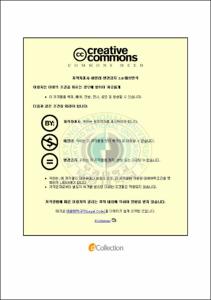패션상품에 대한 시계열 수요예측 모형의 비교 분석
- Alternative Title
- A Comparative Analysis of Time Series Forecasting Models fof Fashion Products
- Abstract
- The fashion products are sensitive to seasons and fashions, and have a short life cycle. Also, their product values drop rapidly as time goes on. As a result, the accurate forecasting of demand is very important. In this study, comparative analysis is performed to the fashion products for selecting the most appropriate forecasting methods. Among the forecasting techniques, only the time series models are considered such as decomposition method, single exponential smoothing, Holt's model, Winters' model, and Box-Jenkins’ ARIMA model. The actual data from a fashion company are gathered and they are from five product groups which are representative to the typical fashion products. Applying the time series forecasting methods, the accuracy is measured by MSE, MAD, and MAPE, respectively. As a result, the Winters' model shows the least error for all five product groups. The Winters' model gives the more weight to the recent data while reflecting a change in level, trend, and seasonality. These properties are proved to be appropriate to the characteristics of fashion products. The result of this study will be able to be utilized in order to improve the demand forecasting in the fashion company.
- Issued Date
- 2008
- Awarded Date
- 2008. 2
- Type
- Dissertation
- Publisher
- 부경대학교 대학원
- Alternative Author(s)
- Lee, Eun Jung
- Affiliation
- 부경대학교 대학원
- Department
- 대학원 패션매니지먼트학연협동과정
- Advisor
- 성덕현
- Table Of Contents
- Ⅰ. 서론 = 1
1. 연구의 배경 및 목적 = 1
2. 연구의 범위 및 방법 = 2
Ⅱ. 수요 예측의 이론적 배경 = 4
1. 시계열 수요예측방법론 = 4
가. 시계열 분석의 개념 = 4
나. 시계열분해법 (decompositionmethod) = 6
다. 지수평활법 (exponentialsmoothing) = 8
(1) 단순지수평활법 = 8
(2) Holt의 지수평활법 = 9
(3) Winters의 지수평활법 = 10
라. 박스-젠킨스 방법 (Box-Jenkinsmethod,ARIMA model) = 11
2. 초기값설정과 예측정밀도 = 13
가. Holt-Winters 모형의 초기값설정방법 = 13
나. 예측오차의 측정 = 15
3. 패션기업의 수요예측 = 18
Ⅲ. 시계열 수요예측모형의 비교 = 24
1. 분석자료 = 24
2. 시계열모형에 의한 예측 = 27
가. 시계열분해법에 의한 예측 = 27
(1) 상품군별 예측 = 27
(2) 예측결과 분석 = 29
나. 단순지수평활법에 의한 예측 = 30
(1) 상품군별 예측 = 30
(2) 예측결과 분석 = 32
다. Holt 모형에 의한 예측 = 33
(1) 상품군별 예측 = 33
(2) 예측결과 분석 = 36
라. Winters 모형에 의한 예측 = 37
(1) 상품군별 예측 = 37
(2) 예측결과 분석 = 40
마. Box-Jenkins, ARIMA 모형에 의한 예측 = 42
(1) 상품군별 예측 = 42
(2) 예측결과 분석 = 51
3. 예측모형별 결과의 비교 = 51
가. 결과의 비교 = 54
나. 추적지표 = 54
Ⅳ. 결론 및 향후 연구과제 = 57
1. 결론 = 57
2. 연구의 한계 및 향후 연구과제 = 60
〈참고문헌〉 = 61
- Degree
- Master
- Appears in Collections:
- 대학원 > 패션매니지먼트학연협동과정
- Files in This Item:
-
-
Download
 패션상품에 대한 시계열 수요예측 모형의 비교 분석.pdf
기타 데이터 / 1.47 MB / Adobe PDF
패션상품에 대한 시계열 수요예측 모형의 비교 분석.pdf
기타 데이터 / 1.47 MB / Adobe PDF
-
Items in Repository are protected by copyright, with all rights reserved, unless otherwise indicated.